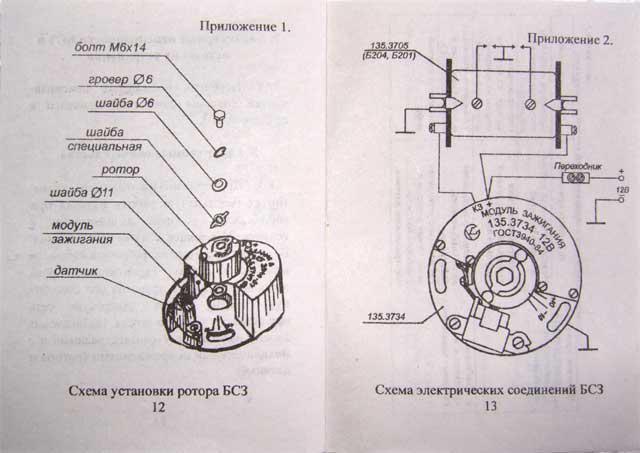Non-contact car ignition system
The ignition system is a complexelectrical devices that are designed to ignite the combustible finished mixture in internal combustion engines (ICE), as well as to ensure their normal operation. Ignition of the combustible mixture occurs from a spark.
Stages of the ignition system:
- the first is the accumulation and transformation of electrical energy;
- the second - the distribution of energy received by spark plugs;
- the third - the formation of a spark;
- the fourth is the ignition of the air-fuel mass.
The main requirements for the operation of the ignition system are:
- reliability, it must provide continuous sparking;
- voltage generation;
- ignition of the mixture in each cylinder.
The malfunction of the system causes difficulties in starting and running the engine, which consist in:
- impossibility or difficulty of starting the engine;
- stopping the engine during the passage of sparking in the cylinders;
- detonation;
- failures in the operation of other systems.
The traditional ignition system VAZ uses a standard distributor, ignition coil, spark plugs, high voltage wires and a 12 W power supply.
In modern brands VAZ ignition controlis carried out with the help of the controller, ie the electronic control unit - the computer. This is because the ignition timing function is set in the factory.
The mechanism of internal combustion engine performs the work according to the principle - ignition of a mixture of air and gasoline in each cylinder of the engine.
The ignition system of the car, regardless of the brand, needs seasonal periodic maintenance.
Ignition systems differ in determining the timing of ignition and in the distribution of high-voltage energy along the cylinders.
There are the following 3 types of ignition systems, depending on the method of process control: contact, electronic and contactless ignition system.
The first is the contact system. Provides for the management of the distribution and accumulation of energy through the cylinders through a breaker-distributor.
The second is a non-contact ignition system. The accumulation of energy is controlled through a transit switch, which interacts with a contactless impulse sensor. Current distribution is carried out by a mechanical distributor.
Non-contact ignition system allowsReduce emissions of heavy metals into the atmosphere, reduce fuel consumption, and increase engine power. This is due to a higher discharge voltage and a qualitative combustion of the fuel mixture.
In the device of the contactless ignition systemthere is an ignition coil, a power source, an indicator of pulses, an ignition switch, a transit switch, a voltage advance regulator, high voltage wires, candles, a distributor.
The contactless ignition system carries outwork on the principle: during the pulley rotation, the sensor distributor generates voltage pulses and transfers them to the transit switch, which creates current pulses in the circuit. When the current is interrupted, current is induced in the subsequent winding of the ignition coil, which is transmitted to the central contact of the distributor. The current through the coil is fed to the spark plugs, depending on the order of the engine cylinders. Candles cause inflammation.
The third is the electronic system. It uses the computer, through which the process of distribution and accumulation of energy is controlled. Among the existing types of ignition systems, electronic, is the most economical, environmentally safe and reliable.
</ p>>






